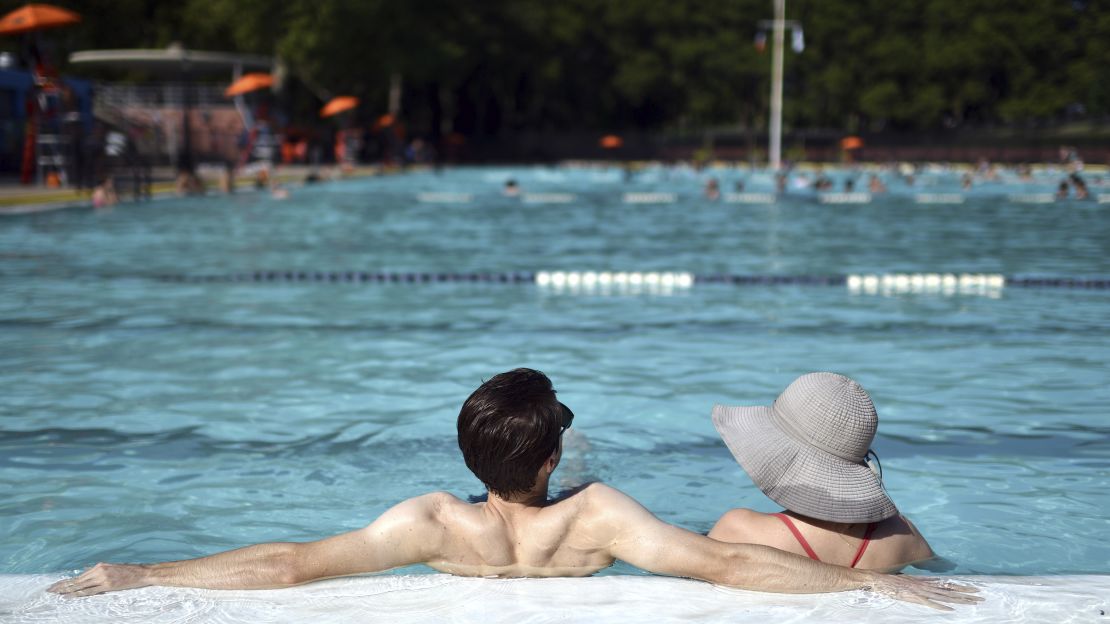Editor’s Note: There are few no-risk activities during the Covid-19 pandemic, but there are ways to mitigate risks. Fully vaccinated people are, of course, at much lower risk of contracting and spreading coronavirus than people who haven’t been vaccinated. CNN Medical Analyst Dr. Leana Wen advises approaching your activity decisions with that in mind.
Where is the fun in warm weather if you can’t take a dip in a cold pool? And now that some people have received Covid-19 vaccines, has the risk of public swimming pools changed?
Coronavirus can spread between people via respiratory droplets, air or surfaces, but the US Centers for Disease Control and Prevention isn’t aware of any evidence about coronavirus spreading to people through the water in pools.

“Any outdoor activity is much safer than an indoor activity,” said CNN Medical Analyst Dr. Leana Wen, an emergency physician and visiting professor of health policy and management at the George Washington University Milken Institute School of Public Health. “Try to go at a time when you can keep easily 6-foot distance away from people who are not in your immediate household,” unless there is an emergency and someone needs to administer CPR. There may be markers inside and outside of the pool as reminders for physical distancing.
“If you’re able to do that, there is virtually no risk” regardless of vaccination status, Wen added. “Chlorine actually is a disinfectant, so the only risk is going to be close contact with someone.”
Covid-19 risk is much lower for vaccinated people, but since unvaccinated people remain unprotected, both groups should still practice the same safety precautions.
First, check the pool website or call the pool management to learn whether it is complying with CDC guidance for aquatic venues, which “is meant to supplement” the guidance of your local government, the CDC has said. If your local regulations for pools are less stringent than CDC guidance, you could follow CDC-recommended practices as well to further reduce your risk.
You may have to make a reservation online or by phone so that the number of people in the water, locker rooms or bathrooms is limited. Shower and change into your swim clothing at home to arrive at the pool ready to swim, which can help you avoid indoor areas. If you have children, consider whether they can keep at least a 6-foot distance from others in and out of the pool – “a few inches longer than a typical pool noodle,” the CDC has said. If your children are not vaccinated or wouldn’t be able to adequately distance themselves, you may need to skip the pool for now.
Wear a mask, but not when you’re in the water – which makes physical distancing in the water critical. Pack two masks since, according to the CDC, a wet mask is less effective and can hinder breathing.
Indoor swimming pools are potentially higher-risk spaces “because, as we know from the smell of these places, they might not be as well ventilated as we would like,” said Krystal Pollitt, an assistant professor of epidemiology at the Yale School of Public Health, and an assistant professor in chemical and environmental engineering at the Yale School of Engineering & Applied Science.
If you typically enjoy using goggles and snorkels, bring your own. Ask about the pool’s cleaning practices for equipment such as lounge chairs, and bring sanitizing wipes to clean equipment yourself if needed. Eating and drinking have been discouraged by the CDC since they require taking off masks, unless you are distanced from people outside of your household.
Get CNN Health's weekly newsletter
- Sign up here to get The Results Are In with Dr. Sanjay Gupta every Friday from the CNN Health team.
Before and after you touch things, eat or drink, wash your hands. If you use hand sanitizer, first wipe off any sunscreen since the greasiness of sunscreen can make sanitizer less effective.












